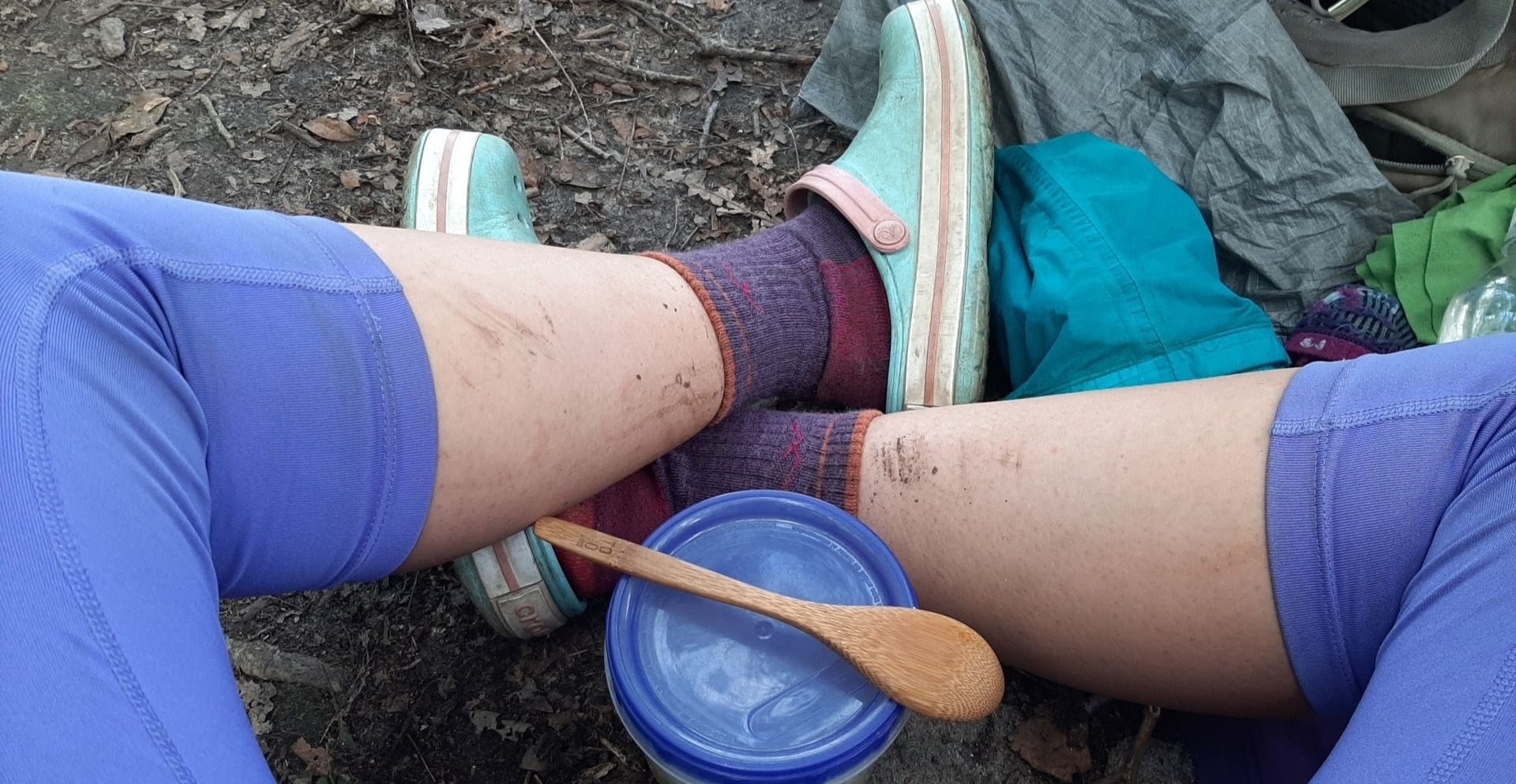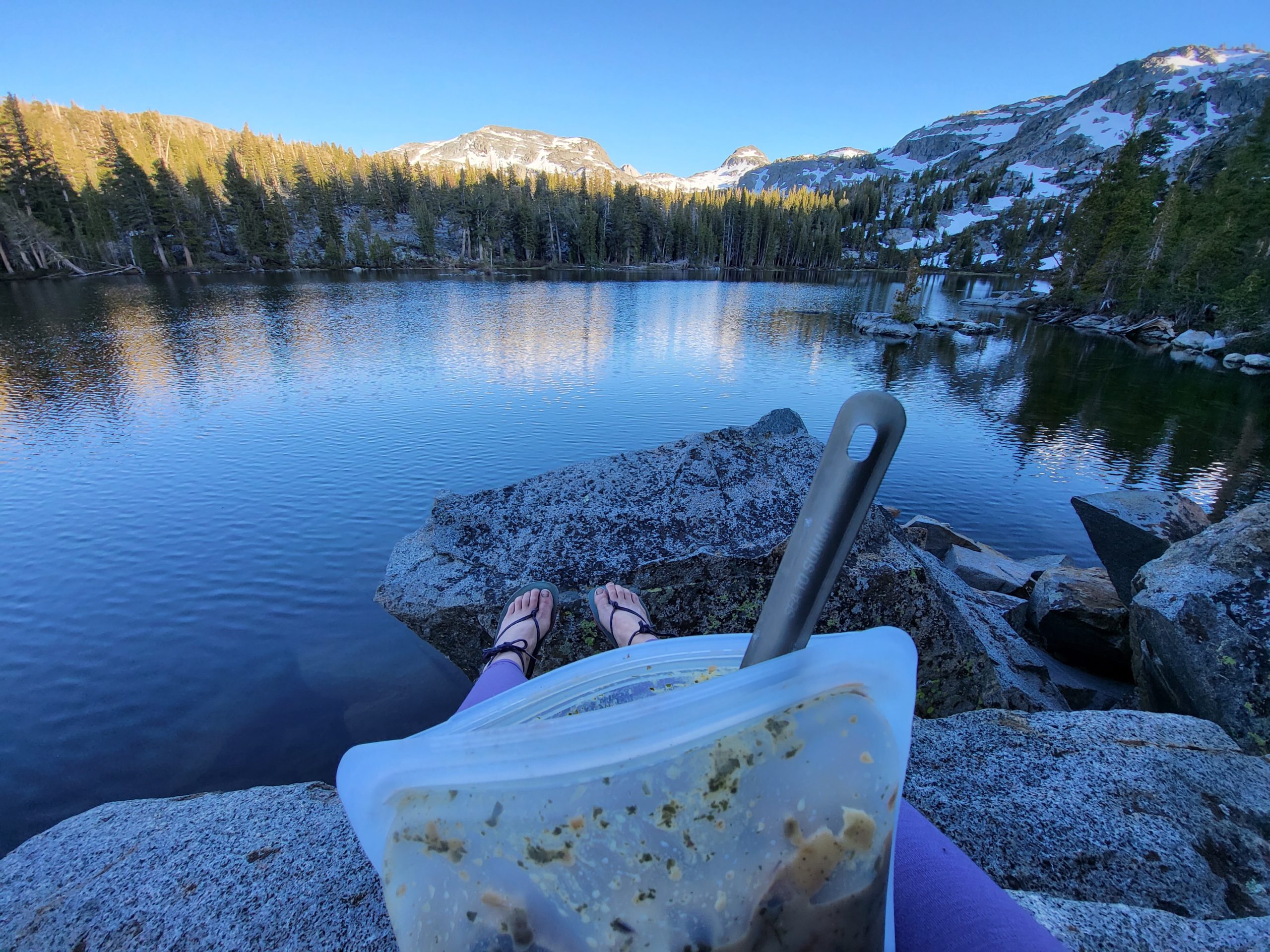How To Cold Soak Food While Backpacking
It’s been a long day on trail, so you couldn’t be happier when you finally make it to camp. You even made it in time to join your friends for dinner! While they all wait for their food to finish cooking, you casually reach into your pack and retrieve your ready-made meal. Despite having been the last one to camp, a clever technique called the cold soak method has made it possible for you to eat before anyone else. Bon appétit!
Cold Soaking 101
How does this whole cold-soaking thing work, you ask? For starters, it doesn’t involve cooking at all, so that’s pretty awesome. It’s an incredibly simple process: all you need is some sort of sealable container (like an empty Talenti jar), water, food (of course), a little bit of strategic timing, and voilà—dinner is made.
How To Cold Soak
As we’ve established, cold soaking isn’t the same thing as cooking. This means certain foods that typically require a stovetop aren’t well-suited for this method (like powdered eggs). With cold soaking, you should opt for foods that are instant (like ramen, potatoes, or couscous), dehydrated (which you can buy or DIY), or freeze-dried (commercially prepared items). These types of food come already cooked—all they need is to be rehydrated (aka soaked).
It’s as easy as…
1. Pour your food of choice into a leak-proof container.
2. Add water.
3. Wait for food to rehydrate.
1. First things first—get yourself a leak-proof container.
A tried-and-true option is a Talenti jar, which gives you an excuse to indulge your sweet tooth and does a great job of not leaking. Other options include Ziplocs or their more eco-friendly, reusable alternative, Stasher bags and bowls. The most interesting option, perhaps, is the Gossamer Gear Crotch Pot—trust us, you’re going to want to check this one out.
READ NEXT – The Gossamer Gear Crotch Pot: Your First Step to Stoveless Backpacking
Next, add your food. Instant anything will do—just make sure that the product actually says “instant.” Good beginner-friendly meals include instant ramen (like Top Ramen) or couscous (Near East is great—just don’t get the pearled variety). These food items don’t require much water or soak time. Other good staples include instant refried beans or oatmeal.

Breakfast made easy. Oh, and don’t forget the instant coffee! Photo via J. Taylor Bell.
2. Add water.
Something to pay attention to here is that some foods are “thirstier” than others. For example, with instant ramen, you can get away with filling the container roughly halfway or so with water (depending on how soupy you want it). On the contrary, instant mashed potatoes require a lot of water.
Your personal preferences with texture are also important to take into account. Really, you’re going to need to experiment ahead of time to determine how much water your meals need. Given enough time, the soup-like mixture of food and water should eventually resemble food you actually want to eat.
3. Wait for food to rehydrate.
You’re also going to need to experiment with how much time your meals need to cold soak. Depending on the amount of the time you allow your food to rehydrate, it could still be crunchy/have a weird texture. Try out your recipes on a shakedown hike before your trip! The good news here is that there are plenty of resources out there from cold soak experts to help you out.
Pro tip: Stop at least an hour before you plan on finishing your day and start cold soaking your dinner. By the time you reach camp, your food should be ready. Coordinate your meal prep with a mid-afternoon snack or rest break; that way you won’t have to make an additional stop.
READ NEXT – 6 Easy Cold Soak Recipes for Your Next Thru-Hike (Basic Ingredients Only)
Food For Thought

Photo via Jenna Oppenheimer.
DIY dehydrated food: If you have time to spare and are looking for additional ways to cut food costs, you can try dehydrating your own food. If this interests you, but you’re not sure where to start, check out this article from former Trek blogger Connor Adams – Dehydrating 101: Here’s What You Need.
Commercially dehydrated meals: There are a lot of great companies in the adventure foods market that make some bangin’ backpacking meals. Fernweh Food Co. and Good To-Go are a couple of personal favorites. Just note that meals from different companies can vastly differ in how well they rehydrate using the cold soaking method. Read reviews and/or reach out to the company to get their advice.
Pro tip: More than a few companies in the adventure foods market offer discounts to thru-hikers, so do your research!
Freeze-dried food: There are also a lot of great freeze-dried backpacking meals out there. As with dehydrated meals, just note that these can also vary in how well they rehydrate from cold soaking.
READ NEXT – Cold Soaking Your Meals: Two Thru-Hikers Share Their Wisdom
Benefits of Cold Soaking
In case you’re still not convinced, here’s a short list of reasons you should give cold soaking a chance.
1. Dinner’s already made by the time you get to camp. Why wait to eat dinner any longer than you have to? Better to satiate those pangs of hiker hunger ASAP.
2. Easy clean-up. No stove means no burned food (win) or having to scrape burned remnants of food from your pot (also win). When you’re done eating, just clean out your cold soak container with water and a drop of biodegradable soap.
3. Ultralight. All of you ultralighters out there have to give cold soaking a try at least once. Going sans stove, pot, and fuel canister is going to shave more than a few ounces off your base weight. Plus, it’s less bulk in your pack.
4. Cost savings. You’ll save money by not having to purchase a stove or pot or continually buy new fuel canisters along the trail. Plus, a lot of foods you can cold soak with are fairly inexpensive.
5. Less waste/use of resources. It’s often hard to find facilities along the trail to properly recycle your used fuel can. More likely than not, it’s just one more thing that’s destined for the landfill.
6. You’ll appreciate town food even more. Cold-soaked food is many things: smart, convenient, and efficient. But it’s still not a hot, home-cooked meal. Chances are, you’ll likely appreciate town food even more than you normally would.
7. Allows you to flex your creativity skills. The opportunities you’ll have to practice your creative culinary skills are endless. Or, you can just eat ramen bomb after ramen bomb…there’s nothing wrong with that, either.
8. You’ll never have to worry about burning yourself or your food. Facts. Never again will you accidentally spill boiling water on yourself (ouch) or burn your food (sadness).
Final Takeaways

Photo via Taylor Bell.
The options for cold soaking are endless. The most important thing to remember is to try out your recipes before you hit the trail—or send yourself a bunch of the same meals in your resupply box if that’s the route you’re taking.
Do yourself a favor and accept that no matter how hard you try, some foods just aren’t cut out for cold soaking. Certain kinds of noodles and veggies will have a hard time rehydrating to the texture you want, no matter how much time you give ’em.
Most importantly, make sure cold soaking works for you. Experimenting on shakedown hikes will give you an excellent idea of whether or not you’re okay with going stoveless. Maybe you’ll realize you don’t mind cold soaking your oatmeal, but you still prefer to have a hot dinner. By all means, do what will help keep you happy on-trail.
Last but not least, even if you are an avid cold soaker, you might still consider carrying a stove for colder climates at altitude, like the Colorado Trail or the High Sierra, for example. Additionally, winter backpacking trips are not the time to try going stoveless. Definitely plan on bringing a stove for overnight winter trips and possibly shoulder season trips as well, depending on your hiking location.
Have cold-soaking advice or recipes of your own you’d like to share? Feel free to leave a comment below.
Subscribe to The Trek’s newsletter to stay up-to-date on all things hiking-related.
This website contains affiliate links, which means The Trek may receive a percentage of any product or service you purchase using the links in the articles or advertisements. The buyer pays the same price as they would otherwise, and your purchase helps to support The Trek's ongoing goal to serve you quality backpacking advice and information. Thanks for your support!
To learn more, please visit the About This Site page.

 ">
">




Comments 3
I enjoyed your post. You gave a good intro to cold soaking. I successfully cold soaked my self-dehydrated meals and snacks for the full length of the AT and so far, my first third of the Florida Trail, and soon a thru-hike of the Colorado Trail. It takes a lot of work, time and organization getting all the food made and put into gallon sized ziplock day bags, but is so worth it for me. My husband sent via priority mail what I needed every 4-5 days. I got every pack on time. Eating a whole food plant-based diet free of added salt, oil and sugar, dehydrating my own food is a necessity for these terms. Half way into the AT, I discovered the advantages of cold soaking over the whole stove/canister/mess thing with cooking. Love it!
I cold soaked last summer on my successful Appalachian Trail thruhike. I like Knorr rice sides. I’d add the package to my Talenti jar at lunch time and then add water until the water line was about a quarter inch above the rice. By dinner time the rice side would absorb all the water and puff up I fill the jar. I tried a Knorr pasta side and it turned into a huge nasty starch plug. Nope! Knorr rice it is! Idahoan mashed potatoes really are instant, just add water and stir. Ramen noodles cold soak in 20 minutes. So get them to soaking then set up camp for the night. Also you can go stoveless and not cold soak. Just buy no cook foods. Chips, pretzels, protein bars, dry cereal, trail mix, pop tarts, candybars, nuts, dried fruit, apple sauce, etc. I saw a hiker last year that only carried cold pizza in gallon Ziplocs! He would buy a large and stuff the slices into a couple Ziplocs and only eat that for 3 or 4 days. ?
I get the possible weight savings and simplicity but cold soaked noodles are just uncooked dough. Weren’t Neanderthals the original cold soakers and where did that get them?